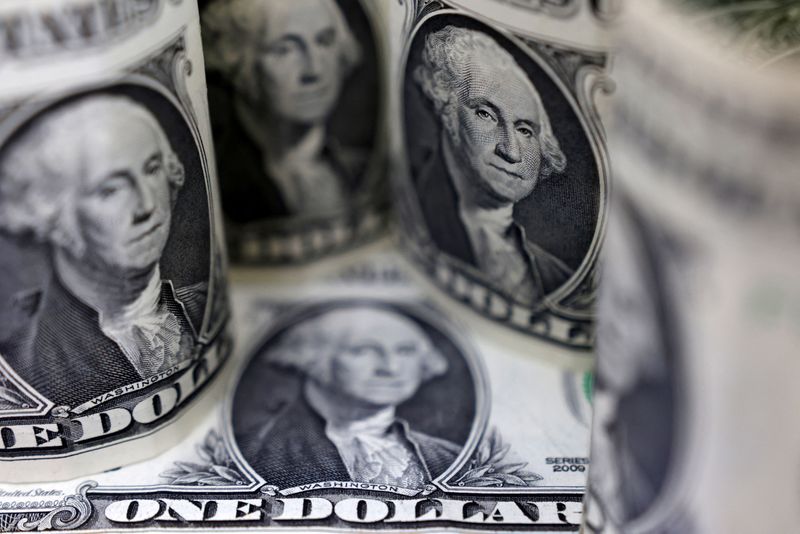By Vidya Ranganathan and Medha Singh
SINGAPORE/LONDON (Reuters) -The dollar hovered near recent highs on Monday as investors digested China’s somewhat disappointing stimulus announcements over the weekend, while the euro continued its slide ahead of a central bank meeting this week.
The euro fell 0.1% to $1.092850, falling for the 11th time in 12 sessions, as investors priced in a widely expected 25 basis point rate cut from the European Central Bank at its October 17 meeting, with data pointing to a deteriorating activity in the eurozone. .
“Given the lagged effects the policy works, it is difficult to argue for more ‘wait and see’. The policy is clearly too restrictive,” Lloyds (LON:) Bank strategist Sam Hill said in a note.
“The issue for (ECB) President Lagarde will be how to communicate the shift without upsetting the hawks who are still obsessed with the rear-view mirror.”
Currency moves were slow as Japanese markets were closed for Sports Day, while US Treasuries were also unlikely to make a big lead as bond markets were closed for Columbus Day.
The pound touched near a one-month low at $1.30595.
The index was just above 103 and nearing last week’s peak, the highest since mid-August, on the back of traders who scaled back their bets on further jumbo rate cuts by the Federal Reserve in the remaining policy meetings this year.
Currency movements in major markets have been tepid this past week. The yen and euro both fell about 0.3%, sterling fell 0.4% and the dollar index rose 0.4%.
Last week’s US data showed consumer inflation slightly higher than expected, but higher weekly jobless claims left expectations intact for the Fed to cut rates by 25 basis points in November and December.
Traders will next have Thursday’s US retail sales and jobless claims on their radar, in addition to the ECB’s policy review.
Fed Governor Christopher Waller – a proponent of a bigger rate cut because he fears the pace of price increases is below the Fed’s target – will speak later on Monday.
CHINA STIMULUS DISAPPOINTED
Trading in Asia was dominated by Beijing’s fiscal stimulus briefing. The Chinese yuan fell 0.3% against the dollar, while the Chinese yuan, whose fortunes are closely tied to China, fell 0.3% to $0.67320.
China said on Saturday it will “significantly increase” government bond issuance to provide subsidies to low-income earners, support the real estate market and replenish state-owned banks’ capital as it pushes to revive sputtering economic growth .
Without giving details on the size of the fiscal stimulus measures being prepared, Finance Minister Lan Foan told a news conference that there will be more “countercyclical measures” this year.
“More time may be needed for more thoughtful and targeted action,” said Christopher Wong, currency strategist at OCBC in Singapore.
“But these measures must also come quickly, because the markets are eagerly awaiting them. Too high expectations versus substandard results would lead to disappointment.”
The currency has fallen nearly 1% against the dollar since September 24, when the People’s Bank of China kicked off China’s most aggressive stimulus measures since the pandemic.

The New Zealand dollar fell 0.3% to $0.60895, following last week’s 0.8% decline after the central bank cut interest rates by half a point and hinted at further cuts.
In digital currencies, bitcoin rose 1.8% to a 10-day high of $64,104, while ether was last up 3.1% after a two-week high of $2,546.35.


